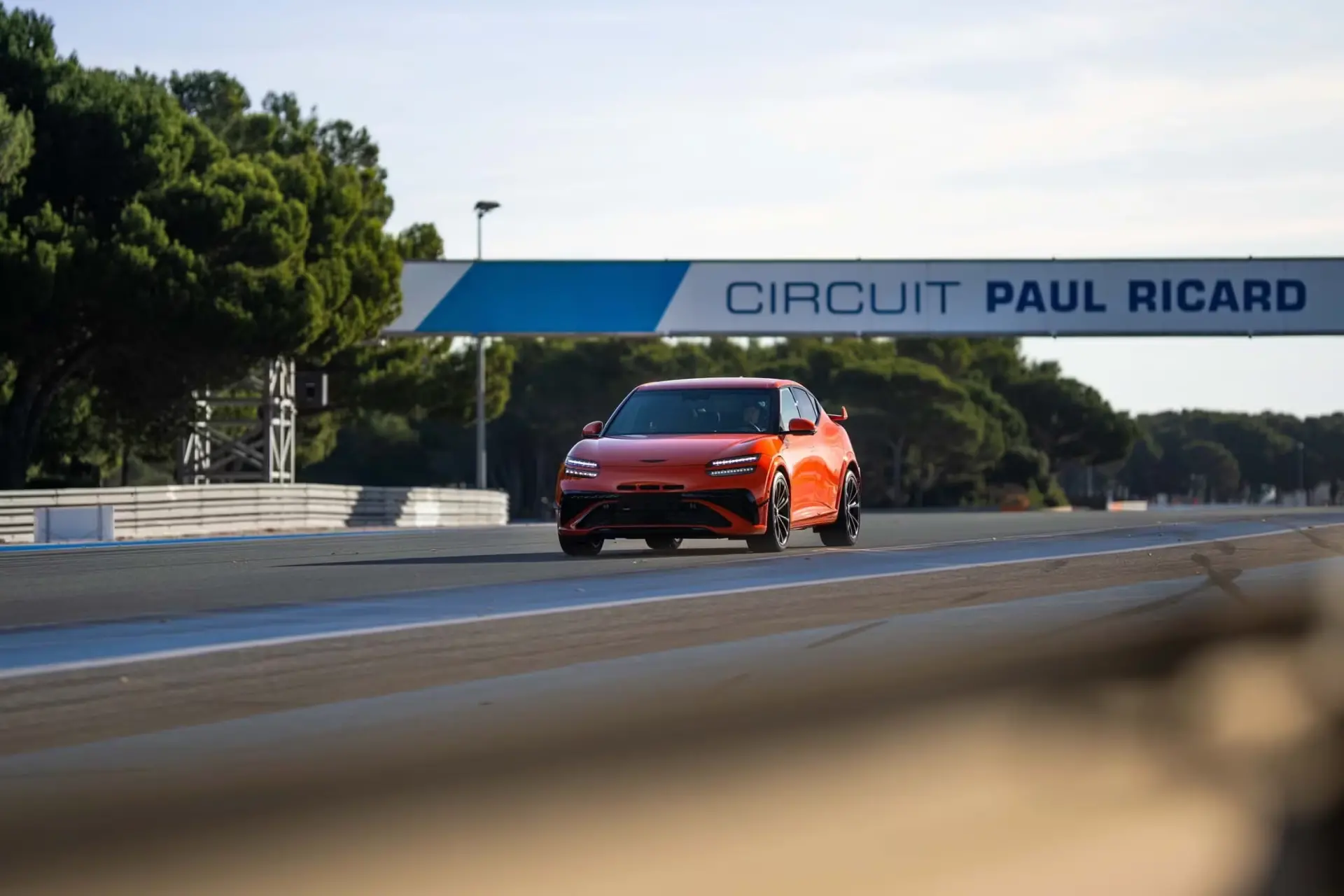 The 2027 Genesis GV60 Magma is the first production car to wear Genesis’ new Magma performance badge, and it arrives with serious hardware and theatrical driving tech.
The 2027 Genesis GV60 Magma is the first production car to wear Genesis’ new Magma performance badge, and it arrives with serious hardware and theatrical driving tech.
If you want an electric crossover that combines raw power with immersive sensory cues, the GV60 Magma delivers both, and it arrives in the U.S. in 2026.
Powertrain & straight-line performance
At the heart of the GV60 Magma is a twin-motor setup tuned for short bursts and sustained performance.
In Boost Mode, the system can produce up to 641 horsepower and 583 lb-ft of torque for 15 seconds; in normal high-performance settings, Genesis rates it at 601 hp and 546 lb-ft.
Genesis claims a 0–60 mph time of 3.4 seconds, a 0–124 mph time of 10.9 seconds, and a top speed limited to 164 mph.
Battery, range, and real-world expectations
 The GV60 Magma uses the same 84-kWh lithium-ion battery as the standard 2026 GV60.
The GV60 Magma uses the same 84-kWh lithium-ion battery as the standard 2026 GV60.
The 2026 GV60 Performance carries an EPA rating of about 252 miles, but expect the Magma’s range to drop because of the higher output and performance tuning, similar to how the Ioniq 5 N falls to roughly 221 miles on EPA tests.
Genesis prioritizes experience over headline range figures here.
Driving feel: Magma Mode, Virtual Gear Shift, and sound design
 The GV60 Magma leans hard into making an EV feel like a performance car.
The GV60 Magma leans hard into making an EV feel like a performance car.
Engage Magma Mode, and the digital cluster switches to a three-circle layout showing motor and battery temperatures plus a g-force meter, information you'd expect on track.
A Virtual Gear Shift system goes beyond cosmetic effects: it actively modifies motor output and regenerative braking to simulate upshifts and downshifts while reproducing a high-revving engine soundtrack.
The goal is immersion, not deception: Genesis wants the sensory layer to match the physical performance.
Launch Control, Drift Mode, and driver aids
Launch Control optimizes torque delivery for maximum acceleration, while a selectable Drift Mode lets drivers slide the rear axle under controlled conditions.
Adaptive damping returns but with revised tuning and a shifted roll center; drive modes include Sprint, GT, and a fully Personal mode for bespoke setup choices.
Chassis, braking, and weight
Genesis increased the GV60's aggression visually and mechanically.
The Magma sits 0.8 inches lower, rides on exclusive 21-inch forged wheels with 275-section tires, and wears wider fenders and a functional rear wing that adds real downforce.
Braking hardware is upgraded to match the power; the claimed curb weight is approximately 4,938 pounds, so Genesis has focused on control rather than radical light-weighting.
Design and interior
Exterior changes are purposeful: a new front bumper with three cooling vents, canards, gloss-black trim, and Magma-specific styling cues that ditch chrome for a racier finish.
Inside, suede-like Chamude covers the seats, center console, and door trim. Orange-and-gray contrast stitching and quilted accents give the cabin a clear motorsport tone without sacrificing refinement.
How the Magma fits in the market
 The GV60 Magma aims squarely at well-heeled buyers who want a performance EV with personality — not the headline-grabbing wattage of hypercars like the Lucid Air Sapphire, nor the extreme power of six-figure EVs.
The GV60 Magma aims squarely at well-heeled buyers who want a performance EV with personality — not the headline-grabbing wattage of hypercars like the Lucid Air Sapphire, nor the extreme power of six-figure EVs.
Instead, it offers a complete package: racetrack-capable hardware, immersive driving tech, and everyday refinement. Within Hyundai Motor Group, it stands as the most track-focused production Genesis to date.
Expert takeaway
The GV60 Magma proves that a modern performance EV is about more than numbers.
Genesis has bundled real mechanical upgrades — brakes, suspension, tires, and aero — with smart software that enhances driver engagement.
If the simulated shifting and sound suit you, the Magma will feel properly alive; if you prefer raw, unvarnished electric torque, the performance figures alone will satisfy.
Either way, the Magma is the most convincing argument yet that Genesis’ Magma lineup can compete with established performance arms.